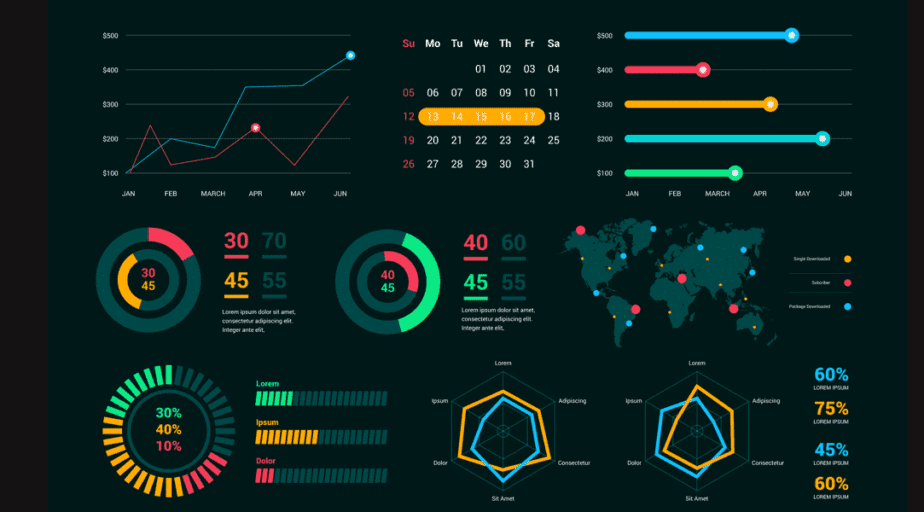Data pipelines and tools are indispensable in modern data management and integration. Pipelines are the solutions that maintain the structured workflow of data, enabling the automation of movement, transformation, and processing of data. Data tools, meanwhile, encompass a wider range of software solutions that facilitate data integration, transformation, and analysis.
Together, these solutions help generate data-derived insights and enable the seamless flow, cleansing, and enrichment of data. They enable organizations to harness the full potential of their data for informed decision-making. Now, naturally, you need proper software to implement such solutions, and the most suitable would usually be ClickHouse or PostgreSQL.
Table of Contents
Data Pipelines Explained
What Are Data Pipelines?
Data pipelines are structured workflows that automate the movement, processing, and transformation of data from source to destination. They serve as the backbone of data integration, ensuring seamless data flow across an organization’s IT landscape. Data pipelines are designed to handle diverse data sources, formats, and destinations efficiently.
Key Components of Data Pipelines
Data pipelines consist of several essential components.
- Data Sources. These are the origins of data, which can include databases, files, APIs, IoT devices, and more.
- Data Transformation. Data undergoes cleaning, validation, and transformation processes to ensure quality and consistency.
- Data Routing. Data is routed to the appropriate destinations, which can be databases, data warehouses, cloud storage, or analytics platforms.
- Data Processing. Some pipelines include data processing steps like aggregation, enrichment, or complex calculations.
- Error Handling. Robust pipelines incorporate error handling mechanisms to identify, log, and rectify data issues.
- Monitoring and Logging. Monitoring tools track pipeline performance, while logging captures important events and errors for auditing and troubleshooting.
Integration with Data Pipelines
Connecting Data Sources
In the integration process, connecting data sources is the initial step. It involves establishing links to various data origins, which can include databases, cloud storage, third-party APIs, and real-time streaming sources. Data connectors and adapters play a pivotal role in facilitating this connection, ensuring data is extracted reliably.
Data Transformation and Enrichment
Data pipelines often include data transformation and enrichment stages where raw data is refined and prepared for its destination. Transformation involves tasks such as data cleansing, validation, and format conversion. Enrichment may entail adding contextual information or aggregating data to provide more meaningful insights.
Routing and Delivery
Once data is transformed and enriched, it needs to be routed to its intended destinations efficiently. Routing decisions consider factors like data volume, destination type (e.g., data warehouse, cloud storage), and data processing requirements. Delivery mechanisms ensure data reaches its target systems reliably and in a timely manner.
Tools and Technologies for Data Integration
ETL (Extract, Transform, Load) Tools
ETL tools are dedicated solutions for data integration that automate the extraction of data from various sources, its transformation to meet specific requirements, and loading into target systems. They are widely used for batch processing and data warehousing tasks, offering features for data cleansing, transformation, and scheduling.
Integration Platforms as a Service (iPaaS)
As reported by Gartner, iPaaS solutions provide cloud-based integration platforms that facilitate the connection of applications and data across on-premises and cloud environments. They offer pre-built connectors, APIs, and workflow automation capabilities to streamline data integration and support real-time data exchange.
Open-Source Integration Tools
Open-source integration tools provide flexibility and cost-effectiveness for data integration projects. The large multitude of online solutions offer a range of features for data routing, transformation, and connectivity, making them suitable for various integration scenarios.
Cloud-Native Integration Services
Cloud-native integration services are offered by major cloud providers (e.g., AWS, Azure, Google Cloud) and are designed to seamlessly integrate data and applications within their respective cloud ecosystems. They leverage cloud resources and scalability for efficient data integration, offering a range of connectors and data processing capabilities.
Common Use Cases for Data Integration
Real-time Data Streaming
Real-time data streaming involves the continuous ingestion and analysis of data as it is generated. It is vital for applications requiring up-to-the-minute insights, such as IoT monitoring, fraud detection, and social media analytics. Data integration enables the seamless flow of real-time data from sources to analytical platforms.
Data Warehousing and Analytics
According to Investopedia, data warehousing and analytics rely on data integration to consolidate data from disparate sources into a central repository. This unified data can then be analyzed to extract valuable insights for reporting, business intelligence, and decision-making. Data integration ensures data accuracy, consistency, and accessibility.
Application Integration
Application integration involves connecting different software applications to enable them to work together seamlessly. It is crucial for business processes automation, customer relationship management, and supply chain management. Data integration plays a pivotal role in synchronizing data between these applications, ensuring data consistency and process efficiency.
Hybrid and Multi-Cloud Environments
Organizations often operate in hybrid or multi-cloud environments, where data resides in on-premises data centers and multiple cloud platforms. Data integration bridges the gap between these environments, allowing data to flow seamlessly across them. This is essential for maintaining a unified view of data, optimizing resource utilization, and ensuring business continuity.
Summary
Integration with data pipelines and tools is crucial in the modern world. They are the solutions that drive the data management in any organization. Without them, it wouldn’t be possible to warehouse data, integrate applications, or bridge multi-cloud environments.
